Are Artificially Grown Diamonds Real Diamonds?
Apr 26, 2024
Are artificially grown diamonds real diamonds?
"A diamond is forever, a diamond lasts forever." This is the most familiar diamond advertisement and is also regarded as the most successful advertisement in the 20th century. Because of their dazzling brilliance and closely tied to love and marriage, diamonds, although expensive, have always been active in everyone's eyes.
So if diamonds can still shine and the price is much lower than the current price, wouldn’t it be ideal? At this time, artificially grown diamonds need to appear.
The English name of cultured diamond is "lab grown diamond", which literally means artificial diamond grown in the laboratory.
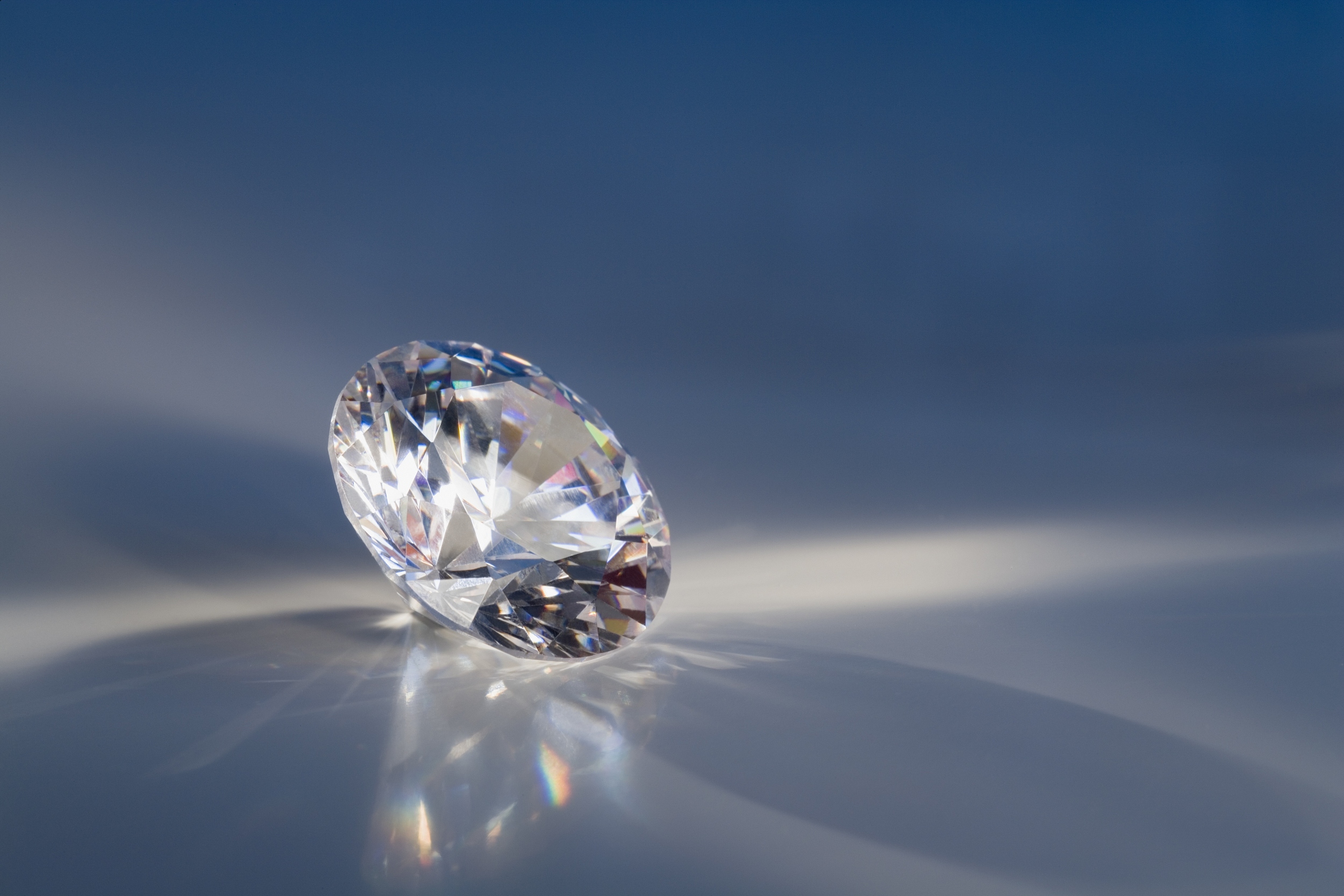
Are they real diamonds? of course!
Diamond is a gem-grade diamond, which is composed of almost pure carbon and is an allotrope of carbon substances such as graphite. Inside the diamond crystal, each carbon atom is tightly combined with the surrounding four carbon atoms to form a special three-dimensional structure that has not been seen in other minerals. It is this dense structure that makes diamonds the hardest mineral in nature. .
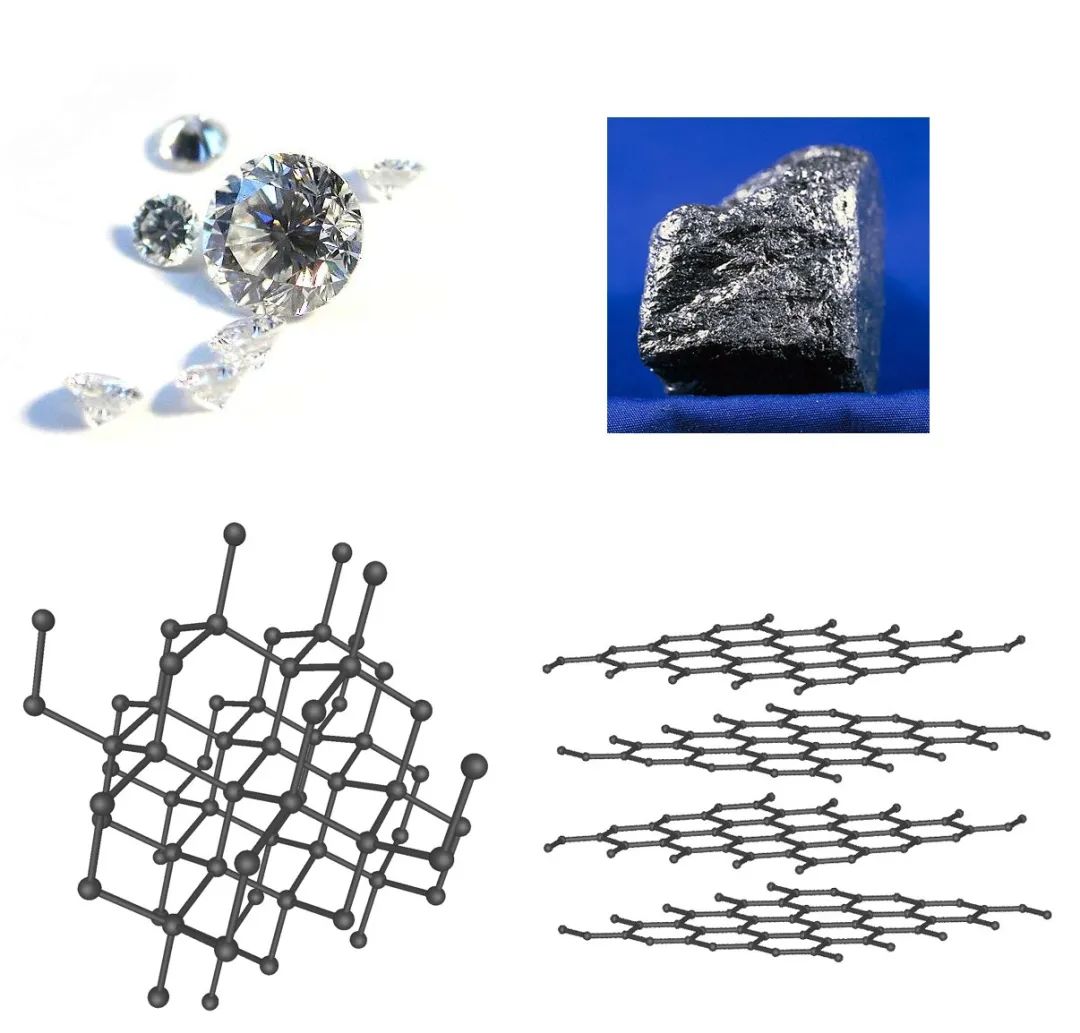
Structural comparison of diamond and graphite. Both are made of carbon atoms, which is why we can make diamonds from graphite. Image source: wikimedia
Lab-grown diamonds, like natural diamonds, are crystals composed of pure carbon atoms. There is essentially no difference in their crystal structure, physical properties, chemical properties, and optical properties. Some experts vividly described the two, "The difference between natural and artificial is like the difference between ice in a river and ice in a refrigerator."
Artificially grown diamonds can obtain certificates from the three major appraisal agencies in the diamond industry, which shows that their status as real diamonds has been officially recognized. In 2018, the U.S. Federal Trade Commission adjusted the definition of diamonds and classified lab-grown diamonds into the category of diamonds for the first time.
How are diamonds grown?
Natural diamonds are buried deep within the earth. It is a carbon-containing mineral and a certain proportion of iron group metals. It takes hundreds of millions of years to form in an oxygen-free environment at high temperatures of 900°C to 1400°C and high pressures of 5 to 6 GPa.
Natural diamonds take a long time to form and are expensive to obtain. Artificially cultivated diamonds only take a few weeks or even days to produce gem-quality diamonds.
Currently, there are two main methods for growing diamonds: one is High Temperature and High Pressure (HPHT); the other is Chemical Vapor Deposition (CVD).
High temperature and high pressure technology is the mainstream diamond cultivation technology in China, especially concentrated in Henan. The main instrument is a six-sided pressing machine. The synthesis process is to put a graphite column wrapped with graphite powder, diamond seed crystal and metal catalyst into an ultra-high temperature and high pressure reaction chamber. The graphite powder is catalyzed by the metal catalyst powder and crystallizes on the seed crystal. The diamond slowly grows with the seed crystal as the center, and it can be generated in about a week. Finally, after polishing and cutting, it becomes a shiny new diamond.
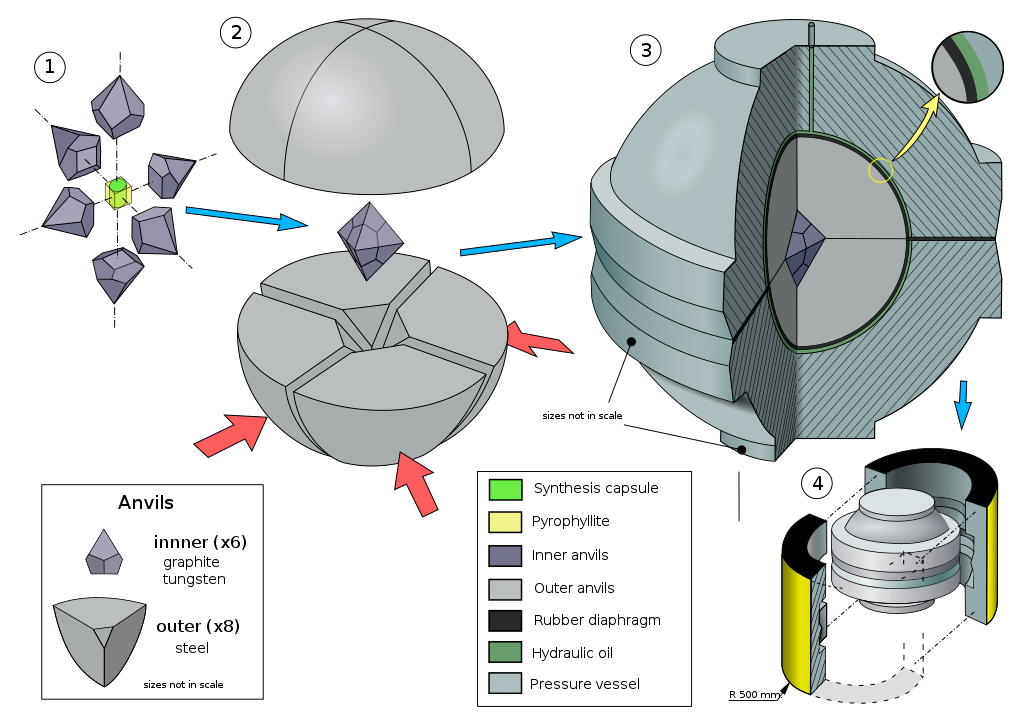
Schematic diagram of the BARS system utilizing high temperature and high pressure technology. Image source: wikimedia
Chemical vapor deposition technology is currently the main method used in European and American countries. Its basic process is: in a high-temperature, low-pressure vacuum environment, put diamond seeds and carbon-containing gas into the reaction chamber to decompose the active carbon atoms in the gas, and control the growth conditions to make the active carbon atoms uniform Deposited onto natural diamond flakes to form new diamonds. After two weeks, the diamond flakes can be ten times their original size. These diamonds wrapped in graphite are very rough and need to be trimmed and cut with a laser, then polished, and then they become sparkling diamonds.
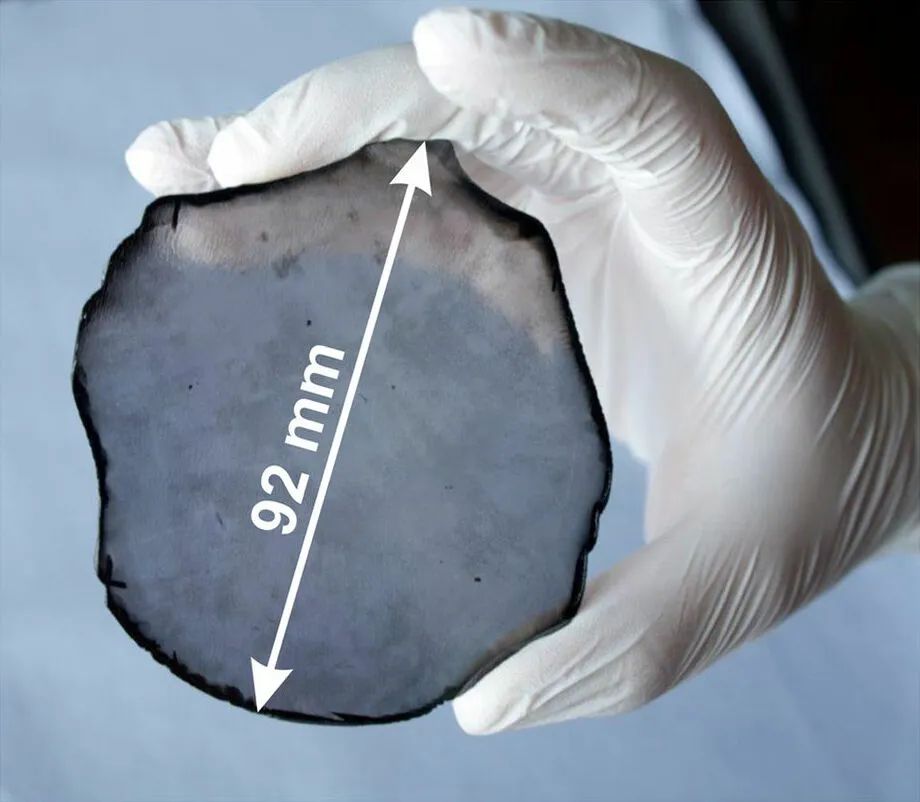
Rough diamonds grown using chemical vapor deposition technology. Image source: wikimedia
Both cultivation methods have their own pros and cons. The core technology lies in raw material ratio, production technology and machinery. Diamonds cultivated by the CVD method have a long cultivation cycle, higher costs, and difficult to control color, but they have high purity and are more suitable for the synthesis of cultivated diamonds of more than 5 carats. Diamonds grown by the HPHT method have fast growth speed and low cost, but are slightly less pure and cannot grow larger diamond crystals. They are suitable for mass production of rough diamonds of 1 to 5 carats.
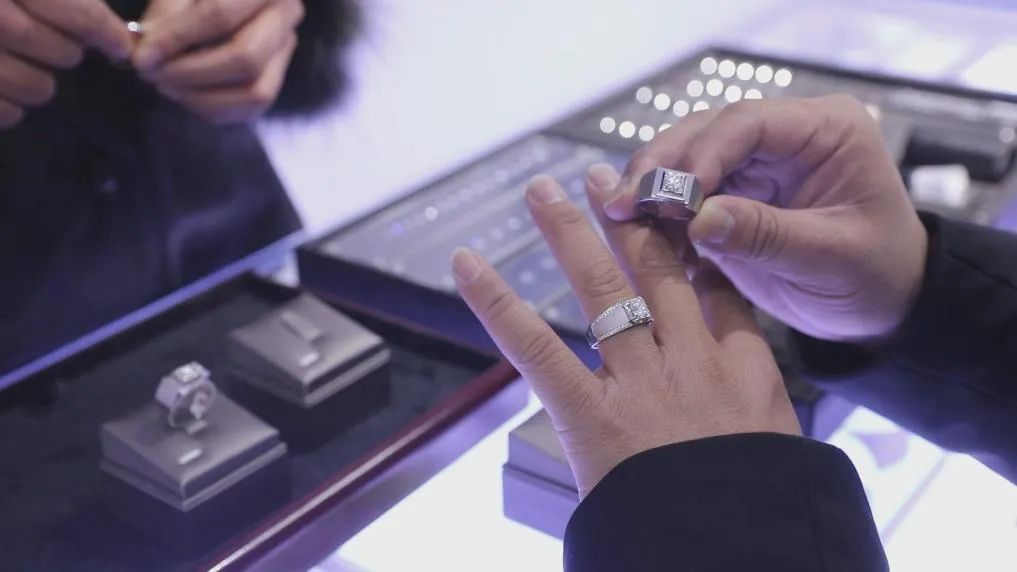
Currently, China, India, and the United States dominate the lab-grown diamond production, processing, and retail markets respectively.
- Company Info
- About Us
- Contact Us
- Customer Reviews
- Company Blog
- Company Policies
- Payment & Shipping
- Sitemap
- How to Order?
- FAQs
- User Center
- Easy Login or Register
- My Account
- My Orders
- Forget Password
- Tracking Orders
- Leave a Message Online
- Submit a Product
- Newsletter
-
Subscribe for Updates. We'll let you know about the latest deals & newest products.
- Join our community
Copyright © 2024 VEASOON . All Rights Reserved.
![]()
![]()
![]()
![]()
![]()
![]()
![]()
![]()
![]()
![]()
![]()
![]()
![]()
![]()
![]()
![]()
![]()
![]()
![]()
